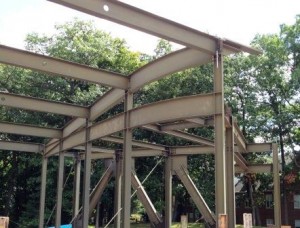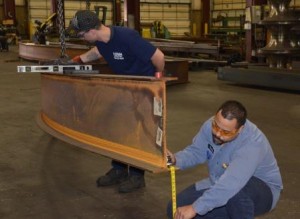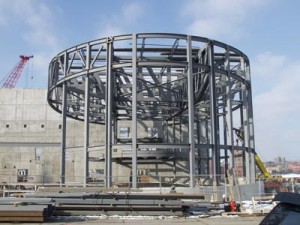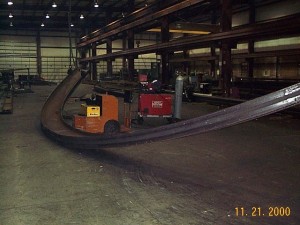Recently at a presentation on curved steel, an architect asked if a structural steel beam could be bent into a compound curve. The wide flange beam was to support and define the roof above clerestory windows in a college center in Michigan. The answer is that steel beams, even very large beams, can be bent many ways including off-axis and helically as well as with multi radii and straight tangents.

In the picture above, the architect wanted to achieve the effect of one beam “dying” into another for a smooth transition. Key to fabricating the compound curve is to insure not only that all the dimensions were held but also that the beam remained plumb.

Another recent project involved dozens of beams rolled with compound bends, but no two were alike. This high-end project spares no expense when it comes to fabrication, but the results should be spectacular and award-winning. Special glass, special cladding and special rolling should all combine for an award-winning project. All we have seen so far are the specially rolled compound curves. As more is revealed, we will be able to share more with you.
The Kern Center at the Milwaukee School of Engineering (MSOE) has an interesting structure that requires beams curved off axis and helically for its dramatic entrance.

A beam with a compound curve was the structural member of choice for a building where its curved facade meets a curved roof. This atttractive building is for the Ohio Air National Guard Medical Training Dining Hall in Springfield, Ohio.

It was a good thing that the architect who attended the presentation on curved steel asked about compound bends. Upon hearing the answer, he changed his design for the better.







